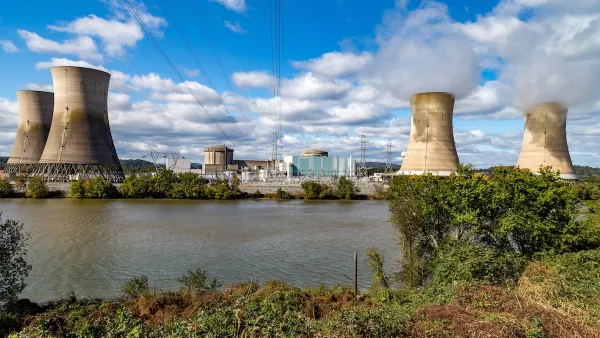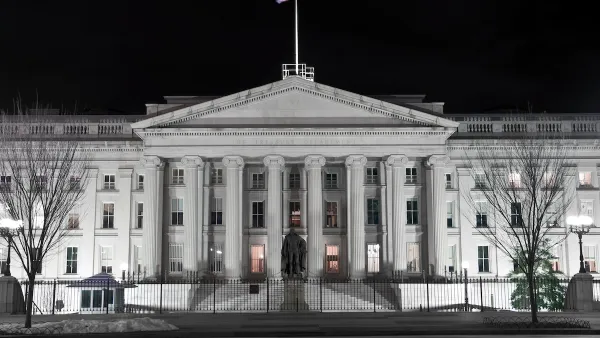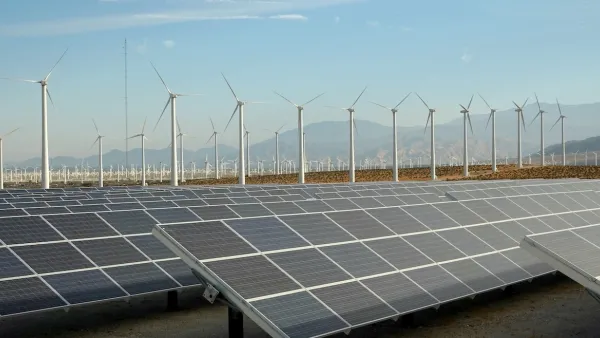Never mind that the lines are needed to carry renewable energy from wind turbines in the north to industries in the south to meet the nation's formidable carbon reduction policies. Public health and property values come first for some neighbors.
Germany set an impressive clean power goal "to reach more than 40 percent renewable power by 2025," writes The New York Times Berlin-based correspondent Melissa Eddy. It's related to another goal—meeting "the accelerated shutdown of Germany’s nuclear plants in the wake of the Fukushima Daiichi disaster in Japan in 2011 which has inched the country back toward a greater reliance on coal," she writes. "Germany already draws nearly a quarter of its annual power from renewable sources."
Instrumental to meeting both goals and reducing reliance on dirty coal power is the construction of "four high-voltage direct current lines" to transmit wind power. Building those lines may be the biggest obstacle to attaining the nation's green goals.
(C)itizens living in the areas proposed for the half-mile-wide transmission lines say they worry that the magnetic fields from the lines could harm their health. (So far, most scientific studies have not found a significant threat. In 2006, the World Health Organization said [PDF] static electric and magnetic fields had no adverse health impact, but public fears persist.)
But it's not just a matter of public health concerns though. As most any affordable home builder in the United States knows all too well, affected homeowners fear a loss in property values.
For the general public, the fear is a little bit irrational,” said Philipp Gerbert, who works for the Boston Consulting Group, which provides information on energy for its clients. “But for those particular individuals actually affected, the presence of a transmission line means the value of their property goes down.”
"The government, in legislation speeding up the lines’ construction, said the public would have a part in the planning process," writes Eddy. Some of main questions the public is asking include:
- Are the lines necessary?
- Can they be undergrounded? [Yes, but too costly for entire lane]
- Can the routing be changed—to other peoples' backyards [hence the NIMBY term], but also to undeveloped, protected lands?
FULL STORY: Germans Balk at Plan for Wind Power Lines

Analysis: Cybertruck Fatality Rate Far Exceeds That of Ford Pinto
The Tesla Cybertruck was recalled seven times last year.

National Parks Layoffs Will Cause Communities to Lose Billions
Thousands of essential park workers were laid off this week, just before the busy spring break season.

Retro-silient?: America’s First “Eco-burb,” The Woodlands Turns 50
A master-planned community north of Houston offers lessons on green infrastructure and resilient design, but falls short of its founder’s lofty affordability and walkability goals.

Test News Post 1
This is a summary

Analysis: Cybertruck Fatality Rate Far Exceeds That of Ford Pinto
The Tesla Cybertruck was recalled seven times last year.

Test News Headline 46
Test for the image on the front page.
Urban Design for Planners 1: Software Tools
This six-course series explores essential urban design concepts using open source software and equips planners with the tools they need to participate fully in the urban design process.
Planning for Universal Design
Learn the tools for implementing Universal Design in planning regulations.
EMC Planning Group, Inc.
Planetizen
Planetizen
Mpact (formerly Rail~Volution)
Great Falls Development Authority, Inc.
HUDs Office of Policy Development and Research
NYU Wagner Graduate School of Public Service




























